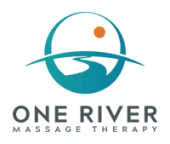I love me some science.
It is sometimes a struggle for me in my career to not always have scientific evidence to back up what massage therapists do. I like being able to tell my clients what has been proven to work and even more importantly, why it does. Of course there is validity and benefit in the countless good things that therapeutic touch does for our bodies and minds that simply cannot be studied. Who can deny the magic of intuition and unspoken communication between therapist and client that can sometimes lead to the most productive, helpful sessions without a word being said? Or what of the quiet mystery of energy work, or those times when a client says: “I don’t know what you just did, but my pain is gone” and, honestly, in that session YOU don’t know precisely what you just did to make that happen either?
Yet when it comes to fostering trust and credibility to this work, for me nothing beats a solid massage study that lays out scientific facts found in a lab. Many massage therapists and instructors at massage schools have been saying for years that massage reduces inflammation and can promote healing, but nobody could come out and say exactly why. In the February 1, 2012 issue of Science Translational Medicine, a study was published showing that massage may play a role in healing injured muscles deep down, all the way down to the cells.
Eleven healthy young men agreed to have both of their thighs biopsied for the study, led by Dr. Mark Tarnopolsky, researcher at McMaster University in Ontario, Canada. Three tissue samples were taken: Once before undergoing strenuous exercise to the point of muscle exhaustion on a stationary bicycle; once again directly after the exercise was completed; and then a third time after just one leg was massaged in each participant.
After tissue study and comparison with the control sample, the research team found that the massage reduced exercise-related inflammation by diminishing activity of a cytokine protein called NF-kB. Massage also seemed to aid in cell recovery by upping amounts of another protein called PGC-1alpha, which spurs production of new mitochondria — tiny yet powerful organelles inside cells that are crucial for muscle energy generation via glucose conversion and for cell function and repair. “The bottom line is that there appears to be a suppression of pathways in inflammation and an increase in mitochondrial biogenesis,” helping the muscle adapt to the demands of increased exercise, said Tarnopolsky.
Dr. Tarnopolsky said that massage works quite differently from Nsaids and other anti-inflammatory drugs, which reduce inflammation and pain but may actually retard healing. Many people, for instance, pop an aspirin or Aleve at the first sign of muscle soreness. “There’s some theoretical concern that there is a maladaptive response in the long run if you’re constantly suppressing inflammation with drugs,” he said. “With massage, you can have your cake and eat it too—massage can suppress inflammation and actually enhance cell recovery.”
Interestingly this study also helped further debunk the idea that massage helps “clear away lactic acid after exercise”—a claim that is increasingly going the way of the dodo—as Dr. Tarnopolsky and his team observed no change in lactic acid concentrations after the massage therapy was performed.
Thanks to technological advances in the last decade that now allow scientists to probe these miniscule body structures, we are able to go from relying only on client’s subjective reports of pain relief and increased muscle performance following massage to examining measureable results on a cellular level.
Can I get a nerdy high-five? Because this is terrific news for the field of massage. With scientific evidence growing (though more studies need to be—and increasingly are being—conducted), does this open doors to even more doctor-referred massage therapy sessions, to possible insurance reimbursement for regular massage therapy sessions, to a new outlook on how clients choose to seek treatment for their pain and inflammation? We can only hope.
I know massage works. Clients know massage works. Thanks to studies like this, we can start to have a scientific look into the answers to the question “Why?” Something big is happening during a massage, and sometimes it’s happening at the SMALLEST level.
